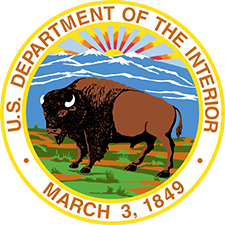Operations and Maintenance (O&M) is the performance of day-to-day activities required to maintain Bureau-owned and/or maintained facilities (buildings, grounds, equipment, systems) to the maximum extent possible for the benefit of the facility users. The primary goal is to ensure that all facilities are maintained in a safe and healthy environment for the occupants and for the protection of the property. O&M is divided into three categories:
- Operations
- Preventive (Scheduled) Maintenance
- Unscheduled Maintenance
Operations: Operations activities and costs include janitorial services, utility system expenses, refuse disposal, fire protection, maintenance vehicle costs, communications costs, and pest control. All services include personnel, equipment, and supplies. Utility expenses include electrical power, natural gas, propane, heating oil, potable water, sewer, and refuse collection. Funds are also used to purchase products required to keep these services operational. The program provides funds to ensure compliance with codes such as 29 CFR 1910.1030, Blood Borne Pathogens, which prevents the spread of Human Immunodeficiency Virus and Hepatitis B Virus. Compliance with the regulations requires increased protective clothing, incident response, and custodial services such as increased cleaning restroom frequency.
Maintenance: Maintenance activities and costs include preventative, routine, cyclical, and emergency unscheduled work for all buildings, repairs and replacements (such as broken windows, screens and damaged floor tiles), site structures, grounds, equipment, and utility systems. Included are costs for personnel, supplies, and materials. Structures include telecommunication radio repeater towers, water towers, underground and above ground fuel storage tanks, parking lots, landscaping, sidewalks, and fencing. Equipment includes heating, ventilation and air conditioning (HVAC), boilers, furnaces, fire alarm panels, sprinkler controls, security lights/camera and emergency lights and sirens and master control systems that may be connected to Central Processing Units. Systems include potable water treatment and distribution systems, sewer treatment and collection systems, storm drainage, fire hydrants, gas distribution, street lighting and Supervisory Control and Data Acquisition (SCADA).
Preventive Maintenance is the routine activities/services required to maintain facilities in good working condition. Inspections of all facility components conducted routinely to assure proper operation and condition and to identify more extensive replacement or repair needs. It is important to follow standard practices and manufacturer’s maintenance procedures for particular systems and equipment and include regular inspections that identify deficiencies and replacement of equipment parts or building components that prolong the life of the asset such as filter changes, lubrication, roof repairs, and caulking.
Unscheduled Maintenance is the correction of unforeseen problems or deficiencies of less than $2,500 cost that must take priority over routine maintenance and must be corrected as soon as possible. These type problems may or may not be life- or property-threatening in nature.
What Facilities are Eligible for O&M Funding?
A facility which houses a federally funded program (BIA, OJS or BIE) is eligible for O&M. Examples:
- BIA – Agencies or other BIA Field locations that house and service BIA funded program such as IIM; Real Estate Services; Facilities Management; Social Services and other Trust or Indian Services programs.
- OJS – Detention Centers and associated facilities that house and service OJS funded Corrections programs. This may include Law Enforcement (PD & CI) if housed in same facility as Corrections program.
- BIE – BIE funded schools and related facilities that house and service a BIE educational program.
Facilities housing federally funded programs may be administered by a Tribe under compact, contract or grant agreements but would still be eligible for O&M funding. P. L. 93-638 contracts may have O&M funding included in the contract as contract support/indirect costs. O&M funding is also included in lease payments for leased facilities.
How do new facilities apply for O&M funding?
When new facilities are being planned and O&M funding will be requested, a Space Expansion Request must be submitted and approved at least two years prior to construction completion. Approval will be by the BIA Regional Director, OJS Director or BIE Director (dependent on which Bureau/Office the facility will serve) with OFPSM concurrence. The request, if approved, will be submitted by the respective Bureau/Office in the next federal budget request cycle which is submitted two years in advance of when the funding will be needed. The Space Expansion Guidelines includes language that if the approval process is not followed, some locations will have to absorb the cost of O&M until official approval is obtained and the O&M funding is included in the budget request process.
When is O&M funding available?
O&M funding becomes available when the annual Congressional Appropriations Bill is signed into Law by the President. In recent fiscal years, Congress has not passed a full year Appropriations Bill by October 1st. When a full year Appropriations Bill has not been passed, a percentage of federal funding is dispensed by Continuing Resolution (CR). In FY2017 there were two CRs and a final Omnibus bill that provided annual federal funding.
When does O&M get distributed?
O&M funding is distributed upon Indian Affairs’ (IA) receipt of funds in accordance with a CR or full Appropriations Bill. Generally, it may take several weeks after a CR has been passed for IA to receive the CR funds. Once IA receives the funds, O&M funds are distributed to the sites.
Contact: Bill Kehoe, Branch Chief - (505) 563-5234 or email: william.kehoe@bia.gov
.


